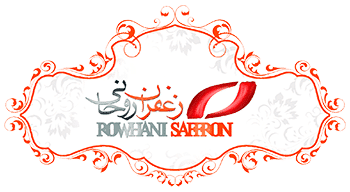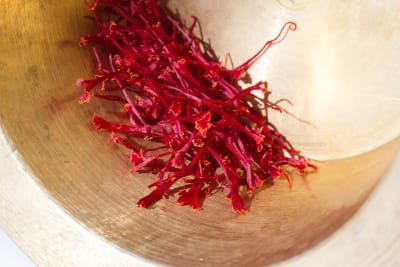Iranian saffron in the traditional and modern market debate
The governor of Torbat-e Heydarieh, stating that there is a dispute between the traditional and modern market over the Iranian saffron product, said: And only about 9 to 13 tons of saffron will be traded through the stock exchange and the rest of this product will be wandering in the traditional market.
Ali Rostami stated: Sometimes some products may lead to backwardness in the long run while not being a factor of development. For example, black gold oil has become a plague on our souls. Sometimes the absolute or relative advantages of some areas, rather than progress, cause that area to lag behind.
The governor of Torbat-e Heydariyeh continued: The saffron crop in Torbat-e Heydariyeh is a young product and he came to Gonabad from Qaen almost two decades ago and is progressing in the Red Plain of Torbat-e Heydariyeh based on climatic conditions.
Rostami said: Until the last five years, there was no saffron in Jelgahrokh, but now we are the center of saffron in this region. A large area of this region is dedicated to saffron by the people, and this strategic product has caused the backwardness of a product called beet. The factory, which should have 500 to 600 thousand tons of sugar per year, will be provided with 250 to 300 tons of beet capacity. While at one point 80 to 90 percent of the factory’s feed was supplied only by the region’s beets, saffron as a strategic product has even replaced wheat and barley.
One-dimensional investment in a field is harmful
The governor of Torbat-e Heydariyeh added: According to this, it should be said that because the advantages of a product are shifted quickly, it is a one-dimensional and one-dimensional investment in a harmful field. For example, last year, 80 to 85% of the pistachio crop in the city of Maholat was damaged due to cold and pests, as well as the water became very salty and somehow damaged the agriculture and economy of this region.
Rostami said: It was possible that in parallel with the work being done in the field of saffron, we could also enter into the issues of processing, stabilizing the planting chain, holding, harvesting and exporting, but this was not done and this product was planted and harvested. Eventually it spread and left the city, and a very small percentage of the saffron economy has returned to the city for reinvestment.
He said: If this product and its income were returned and investments were made in the field of industry and mining of the city, we would have witnessed good events because there are desirable potentials and capacities in the city. For example, there are a few gold mines in the country in Torbat-e Heydarieh, which are turned into not only raw gold but also artifacts.
Rostami added: This is why a good thing happened in the field of saffron last year and it is that we try to manage its price at the national and world levels. But in the meantime, the saffron harvest season is when many people who have cash enter the field and buy both flowers and saffron from our farmer at a low price. Behind this are the factories that at some point bought saffron and stored it. And regulate the saffron market domestically and internationally.
The governor of Torbat-e Heydariyeh pointed out: Last year, the government intervened in this regard and bought a part of the saffron product at an agreed price with farmers through a rural cooperative brokerage to regulate the market, and the price of saffron ranged from 2 to 2.5 million tomans per kilo. 9 million Tomans was raised in the market and immediately through the agricultural fund and saffron organization in the province, saffron entered the stock exchange and its brokerage was formed in Torbat Heydariyeh.
He said: This incident, along with the effects that followed, was also accompanied by problems. Our people and farmers are not familiar with the mechanism of the stock market, because it is a very new activity for a new product like saffron, and in fact it is very professional. At the same time, most of our major producers, at least those producers who traditionally buy and sell, entered this field, and the main structure of its brokerage was established in Torbat-e Heydarieh.
Rostami stated: With the creation of the saffron exchange, the turnover of this product increased 10 times compared to the past, without any goods being moved from time to time. There is also a warehouse for this product in Torbat-e Heydarieh, and this has led to the installation of very modern laboratories in this city, and with all international standards, we can directly manage the minimum price of saffron.
The governor of Torbat-e-Heydariyeh, stating that there is a dispute between the traditional and modern markets over saffron products, said: And only about 9 to 13 tons of saffron are traded through the stock exchange and the rest is wandering in the traditional market.
He said: We believe that in the short term, the necessary training should be given to farmers and producers to pay attention to the stock market. Meanwhile, companies that traditionally buy saffron should know that in the current situation, this type of business is only for the benefit of companies active in this field, and the role of producer, day laborer is not seen, and eventually this production chain is damaged.
Rostami stated that the saffron trader should try to reach a fair price by seeing the share of each component of this production cycle. It had no economic justification, but now this product, as the most expensive, high-quality and most welcomed plant on earth, has found more customers, so it should not be the only benefit for the exporter.
As the main producer of saffron, we must register its intellectual property in the world
The governor of Torbat-e Heydarieh said: The first step is to make all the components of the production chain of this product know what a fair share of this wealth is to the consumer. Another point is that the price of saffron should be avoided.
He continued: When it is mentioned that we are the producer of 95% of saffron products in the world, we must be able to register its intellectual property in the world, which is the place and origin of this product in Iran, so that saffron stays for us more than before, because recently Afghans are registering saffron in their own name.
Rostami stated: In terms of the area under cultivation, it is not possible to develop a saffron crop. We also suffer from dehydration. But in the field of genetics, measures were taken on saffron onions to harvest the product many times over. In the meantime, we must mention the various uses of this product, such as medicinal uses, essential oils, etc. Paying attention to the packaging industry can also be a significant step in presenting this product in a more desirable way. The packaging must be such that it is cost-effective for the world.
We could not produce more wealth from the saffron product
We could not make more money from saffron, he said. Certainly we can increase production at the area under cultivation, and this requires improving cultivation practices. Currently, quality production in the world is in the field of organic, but we have not yet been able to get into the subject of organic saffron. We have to take the same product and the area under cultivation to the organic product and sell it at tens and hundreds of times the price in the world.
The governor of Torbat-e Heydarieh said: More than quantity is important, the quality of the product in the world is also very important for the consumer. Almost now with this climate, it is possible to cultivate saffron all over the world. The important thing is that we can work on both quality and branding. Do not play with the price of this product so much that other countries go to plant this product for themselves. Sometimes playing with the prices of products that are unique in the world will be undesirable for us, because it must take into account the interests and tastes of consumers and purchasing power.
Rostami stated: The most modern and well-equipped factory of saffron processing plants in the world has been set up in Torbat-e Heydarieh with the participation of Spain and has the capacity to deliver raw flowers to be able to offer packaging products of all types and even one liter of essential oil for ten million dollars. It also has warehousing, testing and testing, but for some reason its capacity in the city of Torbat-e Heydarieh has been suspended for several years, partly due to the lack of art of the Iranian capitalist and the problem that has arisen with the foreign capitalist.
He said: It should also be noted that it is not important to be a producer of a product that we must have an advantage in that area. We can be the financial, commercial and saffron processing center of the world with the factory in Torbat-e Heydarieh without even producing saffron, while the knowledge of saffron production has been formed in Torbat-e Heydarieh from generation to generation, and this knowledge as long as in other regions. Once institutionalized, it takes time to realize its value.
The governor of Torbat-e-Heydariyeh said: Also, if we compare the financial difference between saffron user and producer in Torbat-e-Heydariyeh with Ghaenat, we will find that saffron is more sacred in Torbat-e-Heydariyeh and betrayal and fraud in the saffron field in this region are considered ugly in any sense. It does not take place and cultivation has etiquette, for example, saffron is not planted on a large scale, not because it has no water or land, but the saffron growers of Torbat-e Heydarieh believe that because saffron is pure, they keep it pure and cultivate it in the dry season.







Get Social